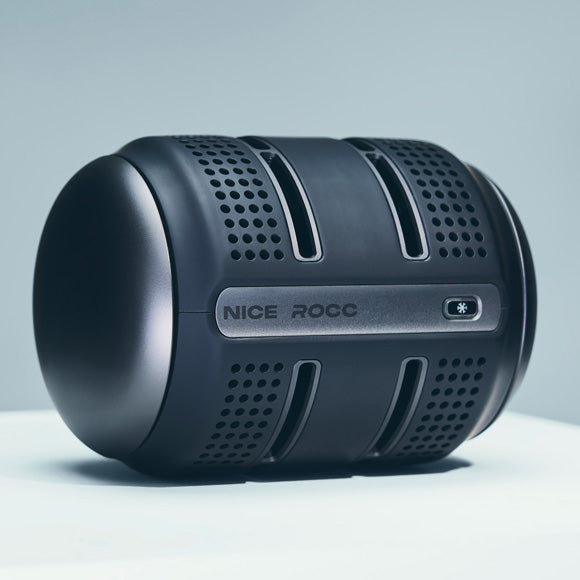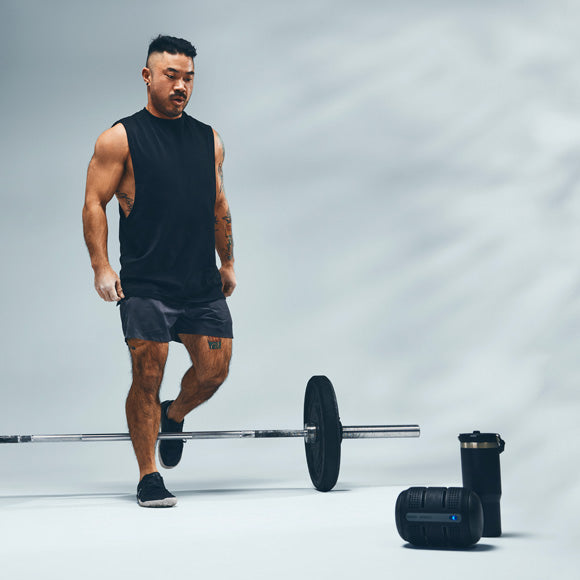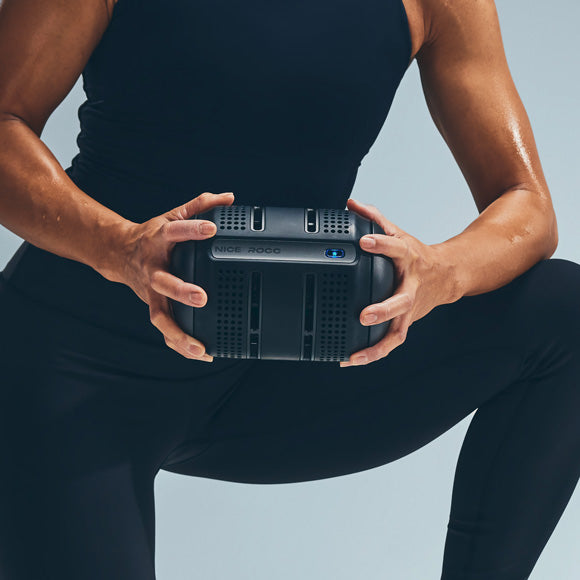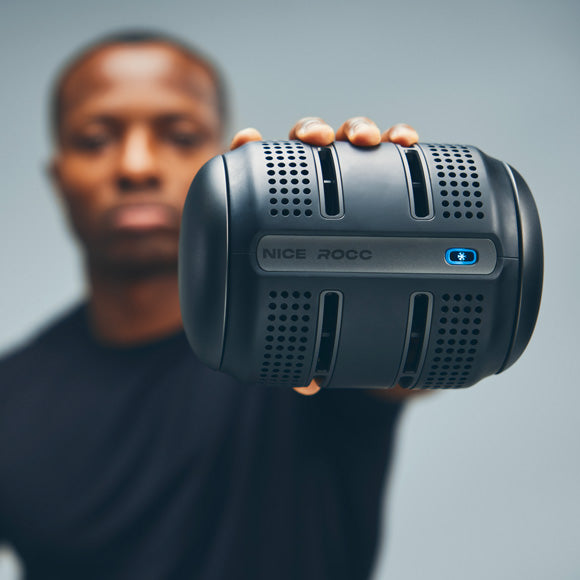The Link Between Heat and Football Performance
Football is one of the most physically demanding sports in the world. Plays often last only a few seconds, but each requires maximum effort, whether that’s a defensive lineman exploding off the snap, a wide receiver sprinting 40 yards, or a quarterback staying calm under pressure. The challenge doesn’t end with exertion: heavy helmets, shoulder pads, and leg pads trap heat against the body, making it harder for athletes to cool naturally through sweating and evaporation.
Add in the fact that games are played in late summer and fall, often under direct sunlight or in humid stadiums, and you have the perfect recipe for overheating. Core body temperature can rise quickly, and once it does, performance declines sharply. Fatigue sets in faster, explosive power drops, and mental clarity suffers, which can be the difference between executing a play and missing an assignment.
Palm cooling is a science-backed solution that addresses this challenge head-on. By targeting specialized blood vessels in the hands, called arteriovenous anastomoses (AVAs), palm cooling lowers internal body temperature from within. Unlike ice packs or cold towels that numb fingers and reduce grip strength, palm cooling delivers safe, controlled cooling, making it practical for every phase of a football player’s journey: training, competition, and recovery.
When integrated strategically, palm cooling can extend stamina, preserve explosiveness, and accelerate post-game recovery.
How Palm Cooling Works
The palms contain dense networks of AVAs designed for rapid heat exchange. When you place your hands on a cooling surface, warm blood traveling through these vessels is cooled before circulating back into the body. This process effectively lowers core temperature, even in the midst of high-intensity exertion.
Why does this matter? Thermal stress is one of the most significant limiting factors in athletic performance. Research in exercise physiology has shown that lowering core temperature during exertion can delay fatigue, sustain ATP production, and improve both cardiovascular and muscular performance (Gonzalez-Alonso et al., 1999).
Stanford researchers confirmed this effect in strength training contexts. Their study demonstrated that palm cooling between resistance sets significantly improved performance, with athletes completing more pull-ups and sustaining higher training volumes compared to controls (Heller et al., 2005). In other words, when your body is cooler, it can work harder, longer, and more effectively.
Palm Cooling During Training
Training lays the foundation for game-day performance. Football athletes spend countless hours in the weight room, on the practice field, and in conditioning sessions to build strength, speed, and endurance. But intense training generates heat, and excessive overheating can cut sessions short, reduce output, and blunt gains.
Benefits in Training
-
Longer, higher-quality sessions: Palm cooling during rest breaks lowers core temperature, allowing athletes to push through more reps, heavier sets, or longer sprints without overheating.
-
Improved strength gains: Evidence shows that athletes who use palm cooling can sustain higher workloads, directly supporting muscle growth and endurance development (Heller et al., 2005).
-
Sharper focus: Heat doesn’t just affect the muscles, it slows reaction time and decision-making. Keeping internal temperature down helps players remain mentally sharp throughout grueling practice sessions.
Practical Application
Palm cooling can be applied between sets of weightlifting, during interval sprints, or immediately after high-intensity agility drills. Just 1.5–2 minutes of palm cooling is enough to make a measurable difference, helping players reset faster and maintain consistency throughout long training blocks.
Palm Cooling During Games
Game day presents unique heat-management challenges. Unlike in training, athletes are wearing full pads, under bright lights or hot sun, and performing in short bursts that demand maximum output. The recovery windows, such as timeouts, sideline breaks, or halftime, are short, making efficient cooling methods essential.
Benefits During Competition
-
Sustained explosiveness: Football is built on repeated bursts of power. Linemen need to win battles in the trenches snap after snap, while running backs and receivers rely on maximum speed every play. Palm cooling helps preserve explosive output across all four quarters.
-
Reduced fatigue between possessions: A few minutes on the sideline may not feel like much, but palm cooling accelerates recovery, allowing players to return fresher for the next series.
-
Enhanced ball control: Overheating often leads to sweaty, slippery hands. Moderate cooling prevents this without numbing fingers, improving grip security for receivers, running backs, and quarterbacks.
-
Clearer decision-making: Mental fatigue under heat stress can affect reaction time and judgment. For quarterbacks reading defenses or safeties making split-second calls, cooling keeps the brain sharper under pressure.
Practical Application
Palm cooling devices can be used during sideline breaks, timeouts, or halftime. Even 90–120 seconds is enough to reduce internal heat and prepare athletes for the next drive. Because modern devices are lightweight and battery-powered, they can be seamlessly integrated into game flow without slowing things down.
Palm Cooling in Recovery
Performance doesn’t end when the whistle blows. Recovery determines how well athletes return for the next practice or game. Football creates significant muscular and nervous system strain, and excess heat can prolong fatigue.
Benefits for Recovery
-
Faster cool-down: Palm cooling accelerates the body’s return to baseline, lowering heart rate and core temperature after exertion.
-
Reduced overall fatigue: By dissipating heat more effectively, players may experience less lingering tiredness post-game.
-
Week-to-week readiness: Effective recovery is essential for the long football season. Palm cooling helps players bounce back more quickly between games, sustaining peak performance across months of competition.
Practical Application
Athletes can use palm cooling in the locker room immediately after games or incorporate it into their recovery routines alongside hydration, nutrition, and compression therapy. This integrated approach ensures athletes not only recover but also return stronger.
Why Football Players Are Embracing Palm Cooling
Football demands repeat, high-intensity performance under extreme conditions. By using palm cooling consistently, athletes gain:
-
Sustained explosiveness – preserving power for sprints, tackles, and collisions.
-
Faster return to play – reducing fatigue between possessions and drives.
-
Improved grip and control – keeping hands dry and stable without numbness.
-
Versatility across positions – whether in the trenches or making plays in space, every role benefits from thermal management.
It’s important to note palm cooling isn’t a replacement for fundamentals like hydration, conditioning, and recovery protocols. Instead, it’s a modern performance enhancer that complements proven methods and gives athletes a measurable edge.
Taking the Next Step
From high school to the professional level, football players are constantly seeking ways to maximize performance and longevity. Heat management is one of the most overlooked but impactful factors in player success. Palm cooling technology, such as the NICE ROCC, provides a practical, evidence-backed tool that supports athletes in training, competition, and recovery.
For players who want to stay sharp, explosive, and resilient across the entire season, integrating palm cooling is a smart, science-driven step forward.
FAQ
Q: How does palm cooling improve football performance?
A: Palm cooling reduces internal body temperature, delaying fatigue, sustaining explosiveness, and keeping players mentally sharp throughout games.
Q: Can palm cooling be used during short sideline breaks?
A: Yes. Just 90–120 seconds on a palm cooling device lowers heat buildup and prepares players for the next possession.
Q: Is palm cooling safe for football players?
A: Yes. Devices operate at moderate temperatures (around 50–60°F), cooling safely without numbing the hands or reducing grip.
Q: Does palm cooling help all football positions?
A: Absolutely. Linemen benefit from sustained power, skill players from endurance, and quarterbacks from improved grip and decision-making.
Q: How does palm cooling aid recovery after games?
A: Post-game palm cooling accelerates cool-down, reduces fatigue, and supports quicker recovery for upcoming practices and matches.
Q: Can palm cooling replace hydration or conditioning?
A: No. Palm cooling complements hydration, nutrition, and training. It is an added tool to maximize both performance and recovery.
References
-
Gonzalez-Alonso, J., Teller, C., Andersen, S.L., Jensen, F.B., Hyldig, T., & Nielsen, B. (1999). Influence of body temperature on the development of fatigue during prolonged exercise in the heat. Journal of Applied Physiology, 86(3), 1032–1039. Link
-
Heller, H.C., Grahn, D.A., & Craig Heller, PhD (2005). Heat extraction through the palm improves aerobic exercise endurance in a hot environment. Stanford University Research.





